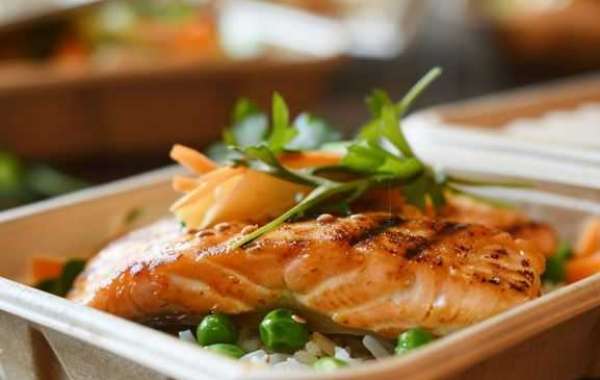Eco friendly clamshell packaging has long been a popular choice for food items due to its security, visibility and versatility. However, as sustainability has risen up the agenda, brands are increasingly looking for eco-friendly alternatives to traditional plastic clamshells. This article examines the benefits of both conventional and more sustainable clamshell packaging options.

Benefits of Conventional Plastic Clamshells
Plastic clamshells offer various advantages that have made them ubiquitous in the food packaging world:
- Safety - Plastic effectively prevents contamination and moisture/air ingress to prolong food shelf life.
- Visibility - See-through plastic allows customers to view the product.
- Durability - Plastic is tough and protects contents from damage.
- Customization - Plastic lends itself to customized shapes, venting and digital printing.
- Recyclability - Many regions have plastic recycling infrastructure in place.
Drawbacks of Conventional Plastic
However, conventional plastic packaging faces growing sustainability challenges:
- Non-biodegradability - Plastic persists in the environment for centuries.
- Greenhouse gas emissions - Plastic production requires fossil fuels with high carbon footprint.
- Microplastics pollution - Plastics eventually break down into tiny particles harming wildlife.
- Public perception - Customers increasingly favor eco-friendly brands.
Eco Friendly Clamshell Packaging Alternatives
Brands now have various biodegradable and compostable clamshell options:
Biodegradable Plastic Clamshells
Made from bioplastics like PHA/PLA which break down as compost but require industrial facilities.
Plant-Based Fiber Clamshells
Examples include sugarcane-fiber or molded pulp clamshells that are both compostable and biodegradable.
Migrated PET Recycled Clamshells
Made from recycled PET plastic but with lower greenhouse gas emissions than virgin plastic.
A Side-by-Side Comparison
| Packaging Type | Materials | Benefits | Limitations |
|---|---|---|---|
| Conventional Plastic | Virgin PET, PS, PVC | Durability, cost, familiarity | Non-biodegradable, fossil fuel intensive |
| Biodegradable Plastic | PHA, PLA, Bio-PET | Biodegradable, compostable | Need industrial composting, higher costs |
| Plant Fiber | Molded pulp, sugarcane | Biodegradable, renewable | Lower durability, higher moisture sensitivity |
| Recycled PET | Post-consumer PET | Lower carbon, reuse of resources | Limited availability, mixed recycling streams |
Choosing the right clamshell depends on a brand's priorities around factors like sustainability, cost, performance requirements and local infrastructure. Many brands opt for a hybrid approach, using conventional plastic where appropriate and transitioning other items to more eco-friendly options.
With growing consumer interest in sustainable packaging, brands stand to gain competitive advantage by adopting eco-friendly clamshell options where feasible. This protects brand reputation while reducing environmental impact.








